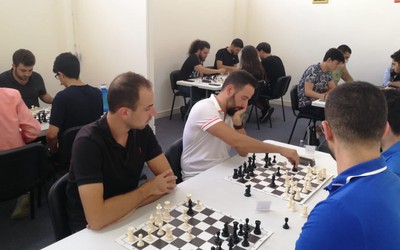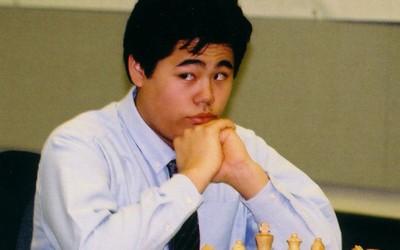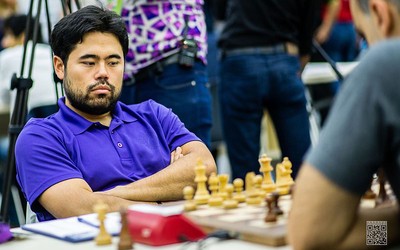
By Paweł Grochowalski - Own work, CC BY-SA 3.0, https://commons.wikimedia.org/w/index.php?curid=12438799
Attacking Chess Patterns: Grand Prix, Queen(1) Attack, and Grand Thorn
In this series of articles, I list and explain all kinds of chess patterns. Chess patterns are recurring chess structures, positions, or maneuvers. Learning these patterns will hopefully reduce the amount of time needed to attain chess expertise.All of my content and writings will be free forever. Donate or become a patron to help support this content.
Accompanying YouTube videos:
#1: https://www.youtube.com/watch?v=_DAi1MerKs4
#2: https://www.youtube.com/watch?v=FhAnHXqaSVY
#3: https://www.youtube.com/watch?v=62c23b9-GKg
Introduction
As was mentioned in the "post intro," my aim is to list all kinds of chess patterns that you rarely, if ever, encounter in chess books and other chess material. My hope is that after reading these articles, you'll react with phrases such as, "Oh, wow, I didn't know I had that pattern in my knowledge bank; I'll have to think about it more in my games," or "I've never seen that pattern before and it seems to be so common! I should learn it so that I become a stronger player!"
Above all, enjoy!
#1 (The Grand Prix Pattern): The Pattern
The Grand Prix pattern is a pattern that typically arises out of the Grand Prix variation of the Sicilian Defense. The key components of the pattern are the queen on h4 (or h3), the knight on g5, and the bishop on h6. It is also crucial that Black has fianchettoed on the kingside as otherwise the key ideas of the pattern wouldn't make sense.
#1: One Thing to Remember
The most important idea to remember about this pattern is that White is trying to go for a mate on h7. White hopes to be able to play Bxg7 and then mate on h7 with the queen.
#1: How the Pattern Plays Out
Self-explanatory!
#1: Sample Game #1
The first sample game was a relatively one-sided affair played by Jensen Allan (2225) against Ernst Thomas (2295). Black tries to go for queenside counterplay but actually ends up helping White as on move 13, the White knight starts its journey to green kingside pastures. On move 16, the positional looks downright terrible for Black, who faces immense kingside pressure. Black didn't last much longer and resigned 5 moves later after White uncorked a very flashy but rather routine exchange sacrifice on move 20.
#1: Sample Game #2
The second game showcasing this pattern went even worse for Black, Evarth Kahn (2315), who got checkmated by White, Vilmos Nogrady (2245) in just 18 moves. Black simply underestimated the rapidity of White's attack and was lost as early on as move 10, for White's attack was simply unstoppable.
#1: Test
On move 14, White went for the typical Grand Prix pattern. The question is whether or not 14. Ng5 was a good move, and, in both cases, how should Black respond?
#1: Test, Full Game
The game continuation shows whether or not White's 14th move was a good one!
Indeed, White's 14th move was a mistake that led to a slight Black advantage which eventually snowballed into a decisive advantage for Black!
#2 (The Queen(1) Attack): The Pattern
The Queen(1) Attack is a pattern that occurs in many different openings. The idea of the pattern is to move the queen from d1 to e1 and then send it over to the kingside with Qh4 (or Qg3). This queen maneuver brings in the most powerful piece into the attack and is usually a key component of any successful kingside attack.
#2: One Thing to Remember
The only idea you need to remember about this pattern is that you should attack like a maniac! The queen isn't being sent off to the kingside to allow for positional considerations!
#2: How the Pattern Plays Out
#2: Sample Game #1
None other than Viswanathan Anand (2765) takes on Christian Scholz (2235). On paper, this was quite a lopsided matchup, but, in practice, Anand had to use all of his positional / tactical genius to gain an advantage against Scholz. You may be quite enthusiastic about Anand's play later on in the game, but I believe that it is Anand's 12th, 13th, 14th, and 15h moves which netted him the victory.
#2: Sample Game #2
Fabiano Caruana (2709), who is truly one of my favorite players (check out my series of articles on Fabiano Caruana here!), showed just how powerful this Queen(1) Attack pattern truly is. Boris Gelfand (2741) blundered on move 15, but his position was already, well, one could say less than desirable. Caruana's 17th move, a silent exchange sacrifice, only fanned the flames of the brutal kingside assault that was taking place.
#2: Test #1
Where would you move the queen to and why?
#2: Test #1, Full Game
To g3, of course!
#2: Test #2
Was f5 a good move?
#2: Test #2, Full Game
No need! Just Qh4 as we have seen!
#3 (The Grand Thorn): The Pattern
The Grand Thorn pattern is an extremely common pattern that is perhaps the most important attacking pattern one should know. A favorite of neural net chess engines, the Grand Thorn pattern immobilizes the enemy king and allows various piece mates, especially Qg7#, to become possible. The Grand Thorn pattern can occur on f6 and h6, but more commonly occurs on f6.
#3: One Thing to Remember
Dark squares, dark squares, and dark squares! That's all you should know. Usually Qh6-Qg7 is the mate threat one should go for, but, sometimes, Nh6 can be # if there's a bishop on g7.
#3: Sample Game #1
The GOAT (or one of the GOATs?!), Magnus Carlsen (2827) crushes Vladimir Potkin (2682) by using the Grand Thorn pattern. Early on in the opening on move 10, it seems as if Carlsen is offering a queen exchange and wants to go for one of his famous grinds. However, nothing could be further from the truth as taking the queen on b6 would indeed be a positional blunder. Black still ended up blundering anyway, on move 16, when they captured with the bishop instead of the pawn. That blunder allowed Carlsen to set up the Grand Thorn pattern after he played a series of brilliant tactical blows. With the pawn on f6, the game didn't last for much longer.
#3: Sample Game #2
Arkadij Naiditsch (2720) plays a highly complicated game against Johannes Carow (2409) and eventually emerges victorious after carefully making sure that the pride of his position, the f6 thorn pawn, remained alive and well. With 24...Qc3, Black was able to get an advantage in the complications, but, on move 28, Black blunders the advantage away and White is slowly able to get back into the game. Black was still in the game on move 32, but he tragically blundered by allowing the Bg7-Nh6# pattern!
#3: Test
Is Bf5 a good move? If it's not, what is the refutation?
#3: Test, Full Game
The answer, this time, lies not in the game!
23...Kh8 would've simply won for Black!
Conclusion
The three attacking patterns we've taken a look at, namely, the Grand Prix pattern, the Queen(1) Attack pattern, and the Grand Thorn pattern, are some of the most common and important attacking patterns one should know. There are a lot of details to consider when going for these patterns, for, indeed, calculation is king. When one masters these patterns, expect an attacking genius to spring forth!
More blog posts by FischyVishy

Why Bughouse Is Good for the Environment
Bughouse — Give it a try if you care about planet Earth.
Nakamura's Secret Weapon Against the Réti Opening - The Ideal Center (Part 2)
In this series of articles, we will deeply analyze a very interesting and novel setup that Hikaru Na…
Nakamura's Secret Weapon Against the Réti Opening - Introduction (Part 1)
In this series of articles, we will deeply analyze a very interesting and novel setup that Hikaru Na…
